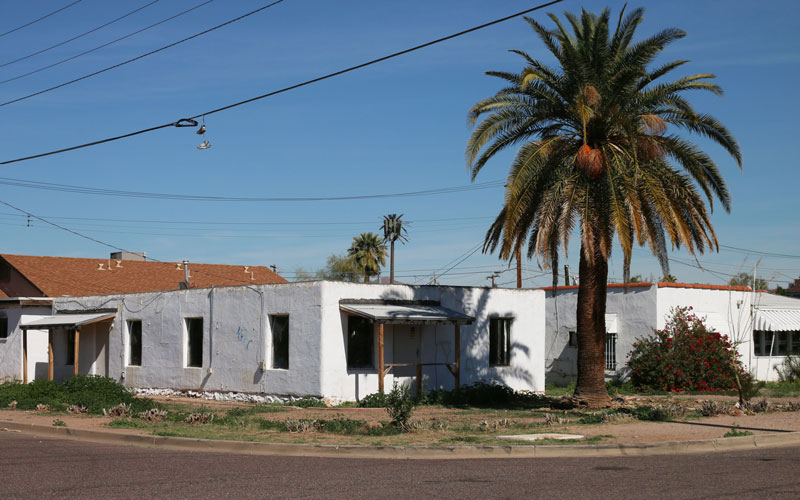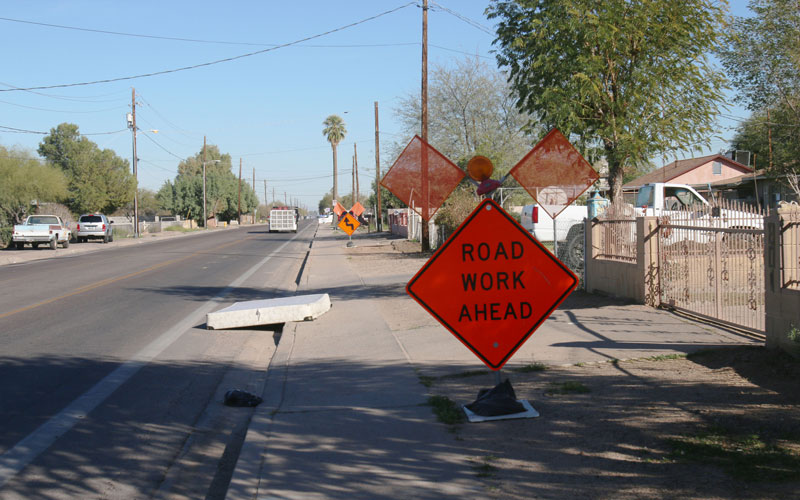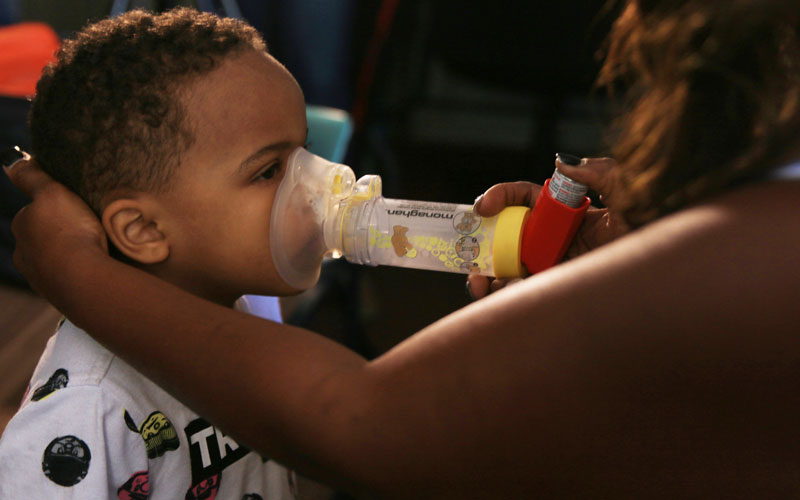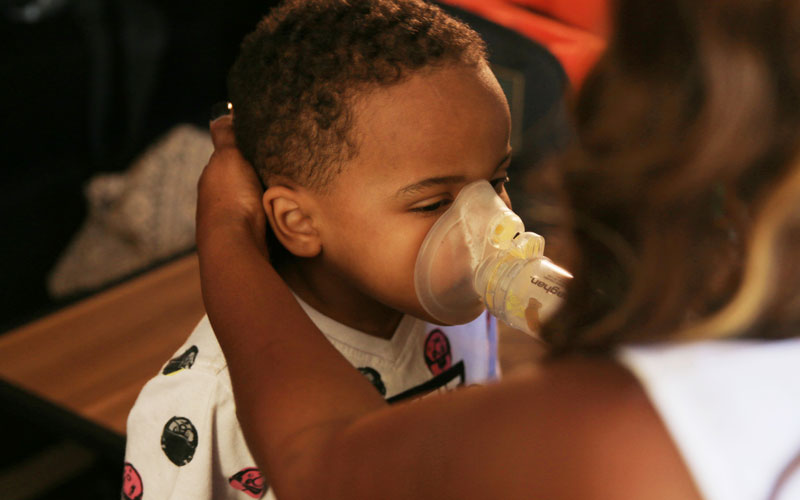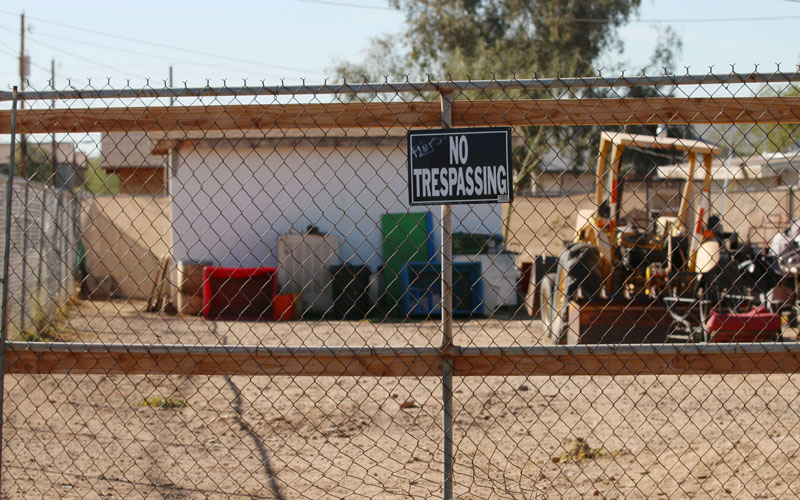Children in the state’s lower-income urban communities suffer more serious bouts of asthma caused by dirty air and other pollutants – despite decades of state and local monitoring and repeated concerns that air in their neighborhoods is dangerous to their health.
A Cronkite News analysis of hospital emergency room admissions by ZIP code between 2009 and 2015 shows that children living in areas like south and west Phoenix, Maryvale or neighborhoods along Interstate-17, to name a few, were more likely to need urgent medical care for asthma than children living elsewhere in the Valley.
Topping this list is ZIP code 85008, a neighborhood just north of Sky Harbor International Airport, with more than 1,600 children requiring emergency hospital care for their asthma.
“If you think about how many schools are along major roads or major highways, that’s a major concern because when the kids are playing on the playground everybody is breathing in, unfortunately, a lot of particulate matter,” said Kimberly Byrne, a registered nurse at Banner Cardon Children’s Hospital in Mesa.
Four-year-old Zaviyon Scott uses two inhalers six times a day, along with twice-daily pills, to treat and control his asthma. His house is located near the constant traffic emissions of South 7th Avenue in a neighborhood dotted with dirt yards.
He’s been to the hospital three times, one of nearly 1,400 children in south Phoenix ZIP code 85041 who have been treated in emergency rooms over the last six years.
“I didn’t feel good,” he said. “It feels like I’m dead.”
Lassandra Scott, Zaviyon’s mother, said other family members have had asthma, including Zaviyon’s older sister.
“I’m familiar with asthma so I noticed when he was probably about four to six months, but the doctors don’t technically diagnose them until they’re two,” she said. “But he had breathing problems then, so that’s when I realized that he was going to have asthma.”
In ZIP code 85009, home to a sewage treatment plant and a landfill, more than 1,200 children have been treated in the ER. Those most affected live on limited incomes and below the poverty line or are close to Valley freeways, vacant lots and industrial sites.
Dolores Ramirez raised her family in the area. Her teenage son has been to the hospital more than 10 times for his asthma, which started when he was three. Now 15, Erubiel Ramirez is enrolled at the Franklin Police and Fire High School, but attended the Alfred F. Garcia Elementary School in zip code 85009.
When Erubiel was three years old he was constantly sick and in and out of the hospital, Ramirez said. She didn’t know what was causing her son’s illness until she took him to an allergy specialist who concluded he had asthma.
Janine Birchett, a nurse assigned to the Garcia school, located near 27th Avenue and Buckeye Road, said 15 to 20 students with asthma visit her office each week. Some come twice a day, or more, depending on the air quality.
“I can hear a lot of [students] wheezing,” Birchett said. “It’s pretty audible because of the environment that we’re in. So you can actually hear them wheezing. You can see their chests rising.”
Both Interstate-17 and Interstate-10 cut through 85009, which extends from Thomas to Broadway Roads between 43rd and 19th Avenues. It is an industrial area with automobile repair shops, wrecking yards, scrap metal recycling sites, warehouses and a railroad station.
The median household income for the area is about $22,000.
Birchett said, along with fluctuations in the weather, other factors that trigger children’s asthma in the area are pollution from traffic and dust, but also molds and pests.
“Some of their homes are older and maybe not as well kept up, and I don’t mean clean inside, but the house itself, the structure,” Birchett said.
Exposure to traffic emissions, mold, pests and rodents trigger asthma. In these cases, allergens cause the airways in the lungs to swell, making it difficult to breathe.
“I tell parents, infants and children breathe faster than adults so they take in more oxygen quicker, but that means they are always taking in more particulate matter, pollution, dust, anything that’s going on in the environment including pollen,” Byrne said.
Last week, the American Lung Association released its State of the Air report and rankings for 2016 and no county in Arizona scored higher than a D letter grade. Maricopa County received an F for both 24-hour particle pollution and high ozone levels. These rankings were calculated from data collected by the Environmental Protection Agency, according to the American Lung Association’s website.
“The lower -income areas tend to be in the areas that have the worst ozone levels because they’re closer to freeways,” said Julie Reid, executive director of the American Lung Association in Arizona.
Particulates and ozone are the two main air pollutants in Arizona. Particulates come from dust. Abandoned farmland in Maricopa County is a major source of dust particulates. Ozone is formed when chemicals emitted from automobiles and industrial sites react to the heat in the air. The brown cloud that can often be seen over central Phoenix is the ozone.
“The things that are around here just produce so much pollution,” said Birchett. “I feel like we are sitting under a cloud of dust.”
Overall, the American Lung Association ranked Phoenix 5th for the most high ozone days. According to the report, nearly 3.6 million children with asthma and more than 24.8 million people with incomes meeting the federal poverty definition live in counties of the United States that received an F for at least one pollutant.
Byrne said the Banner Cardon Children’s Hospital in Mesa treated over 1,200 asthmatic children in the emergency and inpatient departments just last year.
“Those 1,200 patients we’ve treated were definitely asthmatic patients that had the diagnosis of asthma,” she added. “We also treated more than 200 patients for respiratory symptoms and they may or may not have asthma.”
The hospital, located in ZIP code 85202, serves patients from all over the Valley.
Byrne said asthma is prevalent in all areas of Arizona but especially in Maricopa County.
“It’s an inner city, metro concern where you don’t have to live in downtown Phoenix to have pollution exposure,” she said.
Even in 2009, studies by Arizona State University for the Arizona Department of Environmental Quality found that pollutants, known as particulate matter in central, south and west Phoenix was triggering asthma at a “95 percent” confidence level, starting with children as young as 5.
Another report in 2012 by ASU and the University of Notre Dame concluded the disease is “a major public health issue” among children and teens and that “increased asthma is a menace for many growing cities in arid regions, such as Phoenix…”
“So it used to be a school age disease where everyone thought you had to be over five years old to have asthma,” Byrne said. “But we’re getting patients as young as eight months or older.”
The ADEQ has monitoring sites in many of the high-asthma ZIP codes analyzed by Cronkite News. These locations include, 85040 near South Mountain, 85301 in the heart of Glendale and in the west Valley along the Interstate-10.
Air quality must meet the federal health-based standards for PM10, which means mass particles 10 microns in diameter and smaller. Considering the width of a strand of a hair is 60 microns, PM10 particles are very small.
The EPA standard for air quality is 150 micrograms of PM10 particles per cubic meter.
James Anderson, professor emeritus at the School for Engineering or Matter Transport and Energy at Arizona State University, has studied air quality in Arizona extensively for years.
He conducted the studies in 2009 and 2012 on particulate matter that found the amount of particles does not need to reach the federal standard of 150 micrograms before health effects are found in children.
“You don’t have to get anywhere close to the federal standards before you see the asthma rates go up and the correlation is very strong,” Anderson said. “My view is the standards should be stricter because we know the health effects.”
Anderson, however, said there is no political push to make stricter standards and go beyond attaining the current levels of pollution.
“They’re not going to be able to do anything more unless there’s political will in the case of the states, and the legislature, and the governor and at the federal level… to look more closely at the health effects and put more resources into reducing the pollution levels,” Anderson said.
He also blames, in part, all the dust from abandoned farmlands in rural areas that collects and blows into the Valley during storms. Between Phoenix and Tucson there are hundreds of thousands acres of abandoned farmland and Anderson said there’s been little progress done to control them.
“There are things you can do to remediate those fields, but it takes money and there aren’t any rules,” Anderson said. “Much of that land is not owned by farmers, it’s owned by banks and developers and they can be even harder to get ahold of and they have no economic incentive to do anything.”
According to Anderson, the current drought and the reduction of water allocations will leave more farmlands deserted and the dust problem will continue.
Just last week, the ADEQ issued an “Ozone High Pollution Advisory” for Maricopa County, which will continue to be a concern for the summer as ozone is worse when temperatures are higher.



